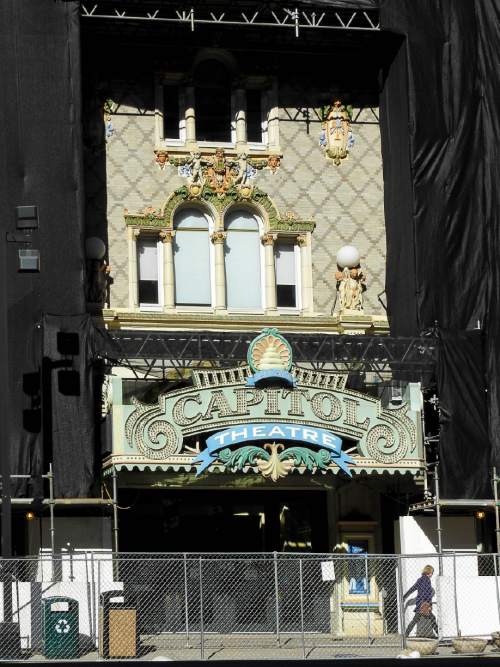This is an archived article that was published on sltrib.com in 2015, and information in the article may be outdated. It is provided only for personal research purposes and may not be reprinted.
Scaffolding surrounding the front of Salt Lake City's Capitol Theatre provided an inelegant approach last Friday for Ballet West patrons and boosters attending an opening-night gala next door at the Jessie Eccles Quinney Ballet Centre.
But it's a pretty good bet that shock waves from building the five-story ballet structure rattled the terra-cotta facade of the century-old theater. So to avoid running the risk of dance aficionados, theatergoers or passers-by on 200 South being conked on the head by falling chunks of facade, the scaffolding went up and repairs began.
"When you have construction, lots of things move and jiggle," said Erin Litvack, who oversees the facilities as Salt Lake County's Community Services Department director. Ground tremors can be hard on an old building like the theater, which went through a major interior renovation two years ago as part of a $33 million public-private project that also created the multistory home for Ballet West and an accompanying dance academy.
"We didn't touch the [Capitol] facade at all during construction," said Litvack, besides putting up a sign adding the Quinney family's name to the structure in recognition of a $4.1 million donation that kept the project alive after anticipated federal funding fell through.
Big steel beams were pounded into the bedrock to support the ballet center's multiple stories, she noted, and that repeated thumping apparently took a toll on the terra-cotta pieces that have long been prominent features of the theater's exterior.
"We started to notice there seemed to be some cracking," Litvack said. A deeper evaluation found the pieces were lifting up and separating from the main structure, also exposing asbestos that needed to be removed.
"We've been removing those unsafe terra-cotta pieces and bringing them down, seeing which can be salvaged, repurposed and adhered safely back and which will have to be remolded and brought back in new condition," she said. "With a 100-year-old building, it's surprising we didn't find other things going wrong, too."
Just how much it's going to cost to fix the problem is not clear yet. But in making her 2016 budget presentation Tuesday to the County Council, Litvack requested $400,000 to cover the tab.
Council action on the budget is expected by early December.





